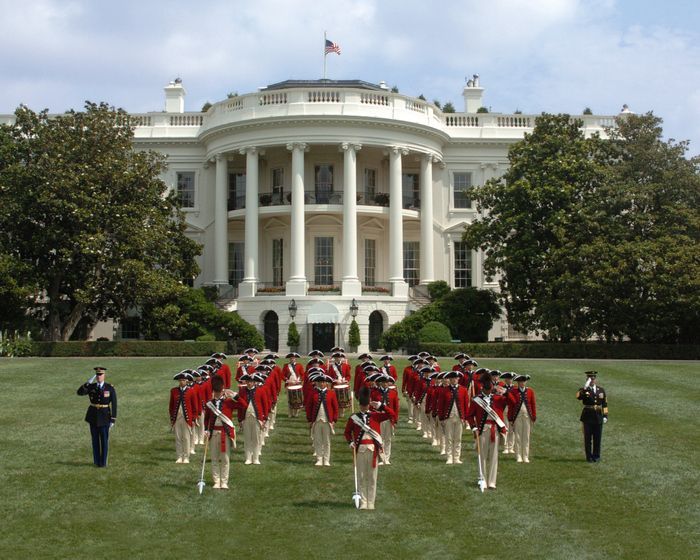Fife and drum corps ensembles are familiar sights during the Fourth of July celebrations and other patriotic special events. These small groups of military musicians played an important role both on and off the battlefield during the American Revolution. To preserve the corps’ history and music, The United States Army Old Guard Fife and Drum Corps was founded in 1960 and has been the official escort to every United States president since John F. Kennedy.
This ensemble is part of the 3d U.S. Infantry Regiment known as The Old Guard. According to the regiment’s mission statement, their role is to conduct memorials honoring the fallen soldiers and represent the Army at special events and ceremonies. Part of that representation includes the Old Guard Fife and Drum Corps.
The corps’ uniforms resemble those worn in 1784 by the musicians of the Continental Army under the leadership of George Washington. Part of the uniform includes white wigs that were popular and considered fashionable during colonial times. Their clothing is easily recognized by the red regimental coats, black tricorn hats, white waistcoats and white coveralls. It was tradition for fife and drum corps members to wear the reverse colors of that of their assigned regiment.
The 69-member corps makes it possible for the musician requirements to vary based on the type of performance. One group can have as few as three members or an average number of 22 musicians or more. Within the total ensemble, there are three smaller groups: the Fife Group, Bugle Group, and Drum Group, and two specialty groups, Historical Trumpets and Historical Flutes.
The two historical groups perform music from the Baroque and Classical eras using replicas of flutes and trumpets from the 18th century. The Historical Trumpets demonstrate the trumpet’s role and signals used in Europe and America during the 17th and 18th centuries. The Historical Flutes showcase dance music during the reign of Louis XVI through the American Revolution.
Fifes were used for military signals for centuries in Europe. That practice continued in America during the Revolutionary War and throughout the 19th century. In addition to signaling on the battlefield, fifes were used to call the regiment into formations, announce hours of duty, and to help lift morale. Bugles, like fifes, were used for military signals but they did not gain popularity until the early 19th century. The fifes and bugles of the U.S. Army Fife and Drum Corps have been modernized so the musicians can play both period music and more modern arrangements.
The Drum Group or Old Guard Drumline uses handmade snare and bass drums. The musicians perform a variety of styles ranging from American drumming of the 18th and 19th centuries to more intricate works. They also include Swiss and Scottish styles of drumming. All of the smaller groups participate in the Fife and Drum Corps’ educational outreach by performing and teaching in elementary schools, high schools, and universities, whether in the classroom or by holding master classes.
In addition to being well-trained musicians, members of the corps must be on active duty in the U.S. Army. Before they can become a part of the corps, they must have completed basic combat training. Being a part of this ensemble is a permanent assignment for as long as the soldier is enlisted.
Since its founding, the U.S. Army Old Guard Fife and Drum Corps has given an average of 500 performances every year. No matter where the members perform, whether it is in the Presidential Inaugural Parade, for visiting dignitaries and heads of state, or at major sporting events, this ensemble is an official representative of the U.S. Army. The corps combines military history and music of early America and makes it available through public education and performances.


WOW What a lift for any patriot’s spirit. Thank you .